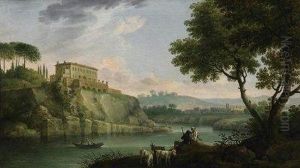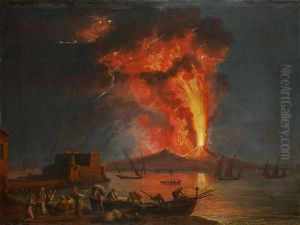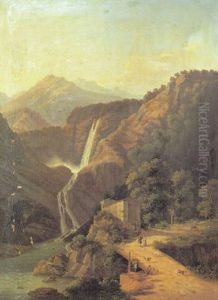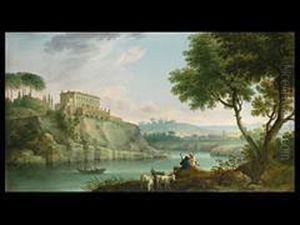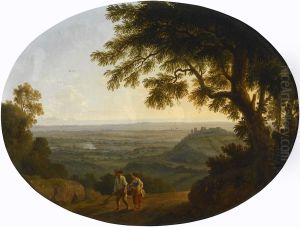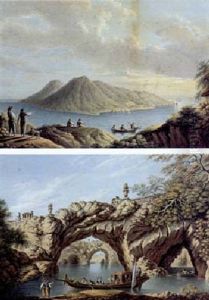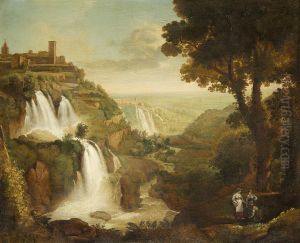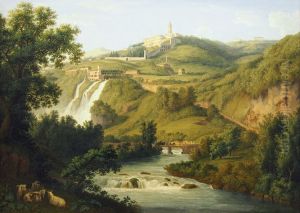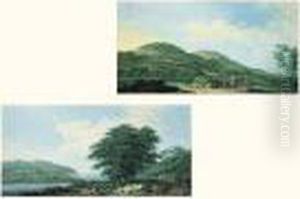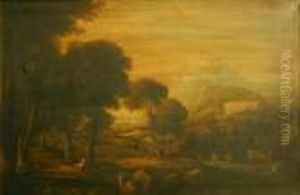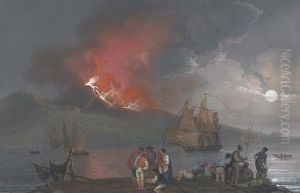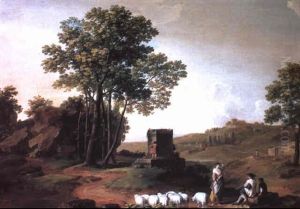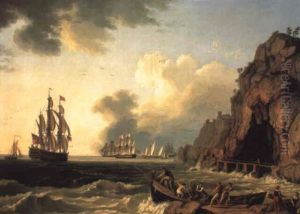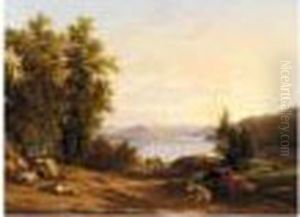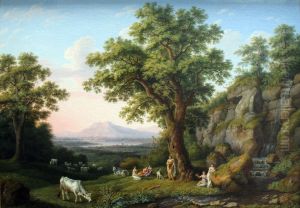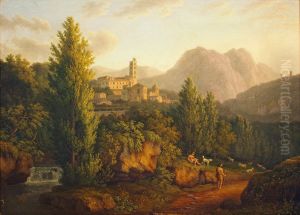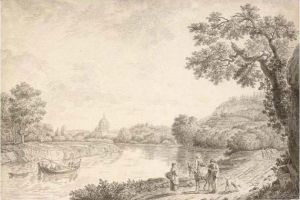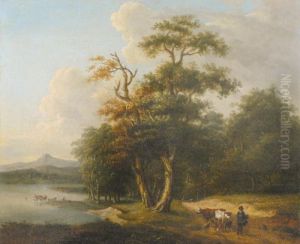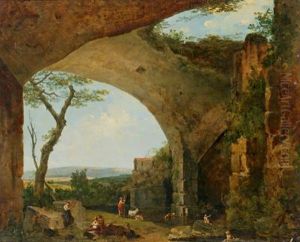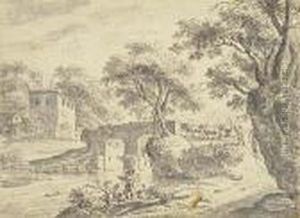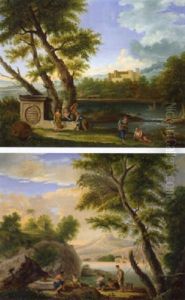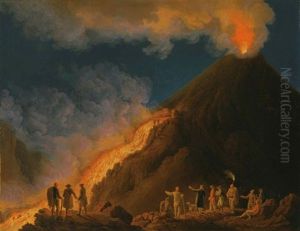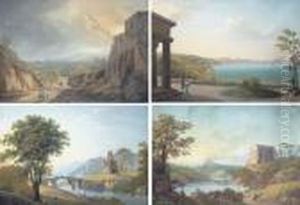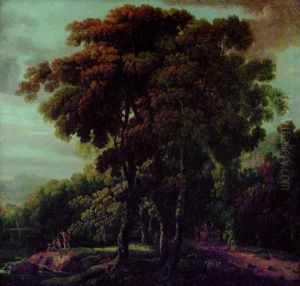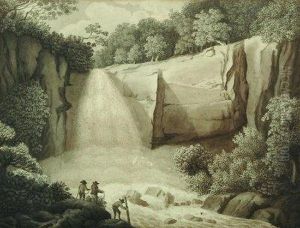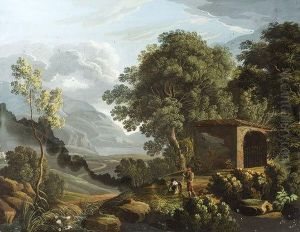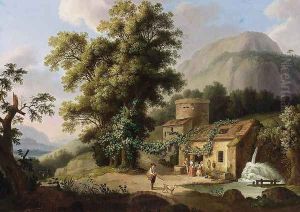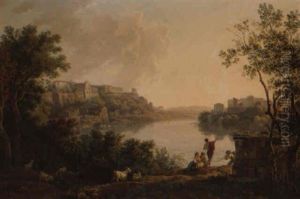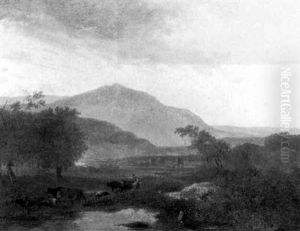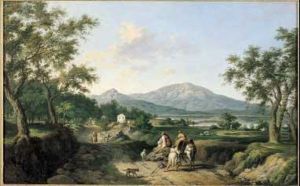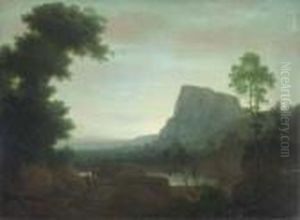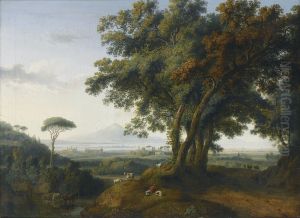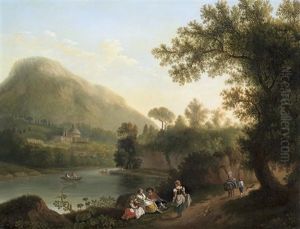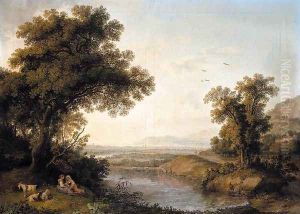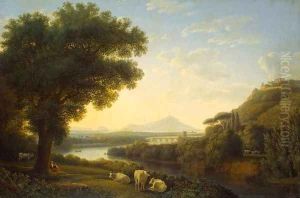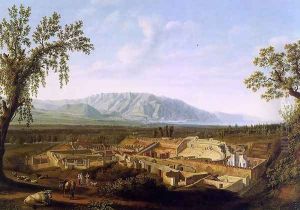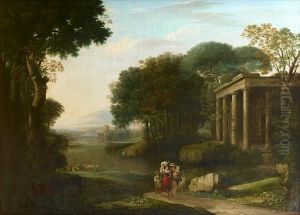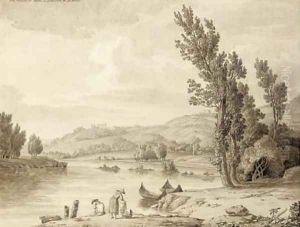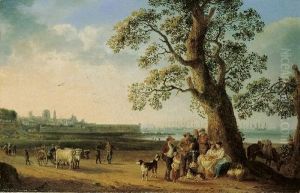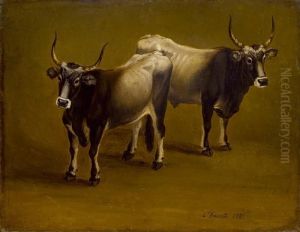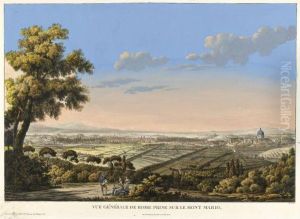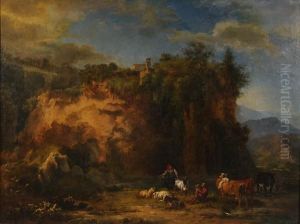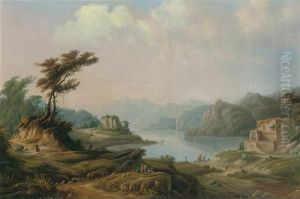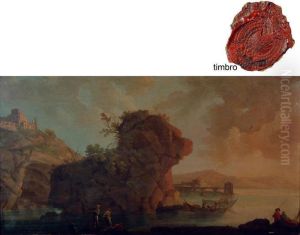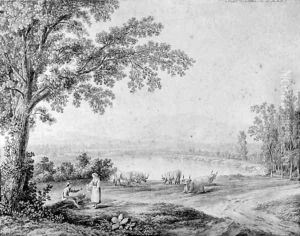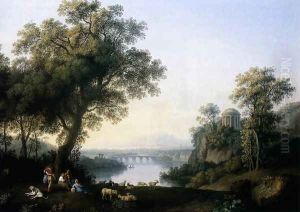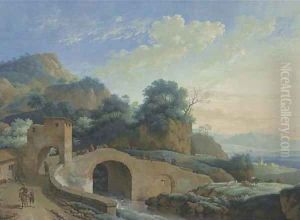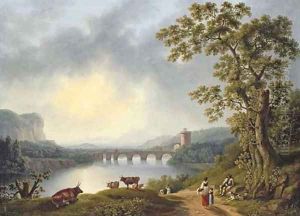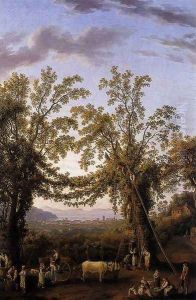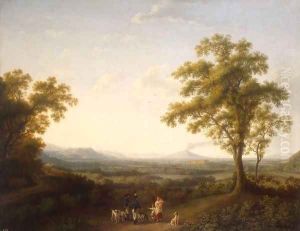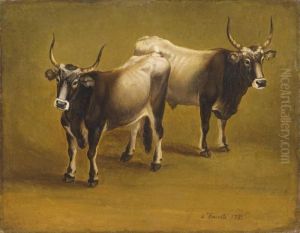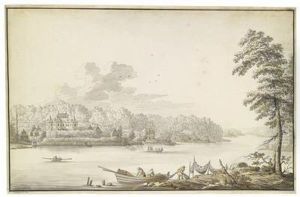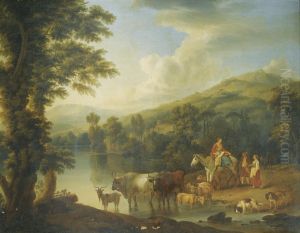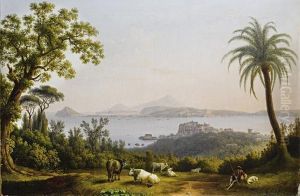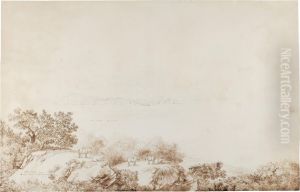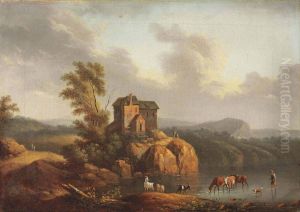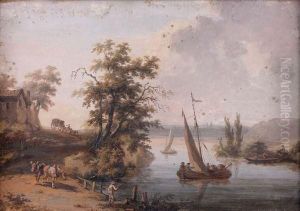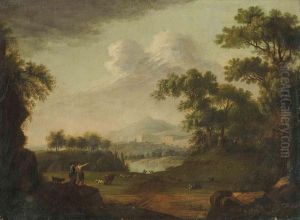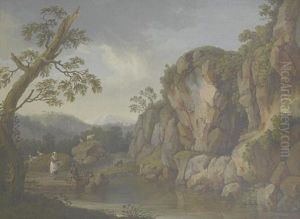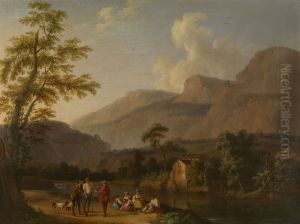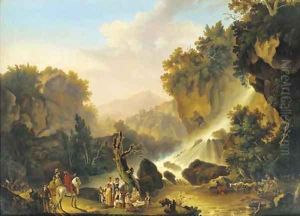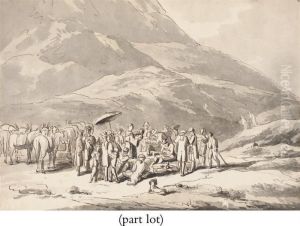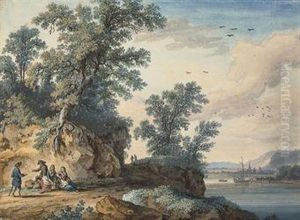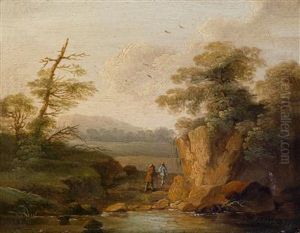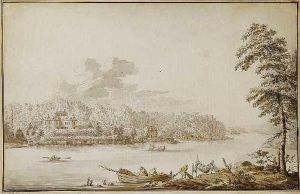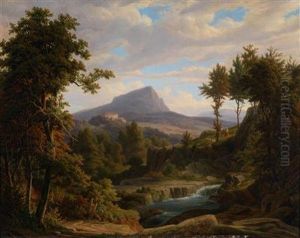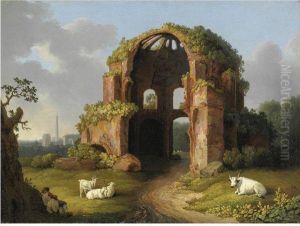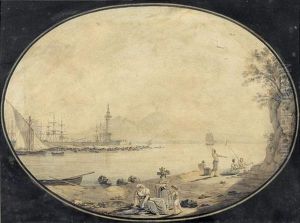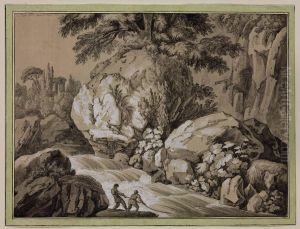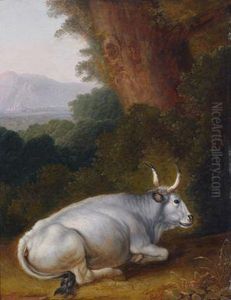Jacob Philipp Hackert Paintings
Jacob Philipp Hackert was a prominent landscape painter born on September 15, 1737, in Prenzlau, Brandenburg-Prussia, now part of modern-day Germany. He was the son of a painter, which provided him with an early introduction to the world of art. Hackert received his initial artistic training from his father, Philipp Hackert, and later studied at the Berlin Academy of Art.
Hackert's artistry developed through his extensive travels across Europe, which greatly influenced his work. In 1765, he embarked on a tour through Switzerland and France, and eventually made his way to Italy, which would become his base and greatest source of inspiration. He settled in Rome in 1768, where he became a central figure in the German artist community.
During his time in Italy, Hackert specialized in classical landscapes, often depicting scenes from the countryside, ancient ruins, and pastoral settings. His work was characterized by its meticulous detail, accurate representation of nature, and serene compositions. He became known for his ability to capture the atmospheric qualities of light and the specific characteristics of the Italian landscape.
Hackert's reputation grew, and in 1786, he was appointed by Ferdinand IV of Naples as the court painter. This period marked the height of his career, and he produced many works for the royal family, including views of the Bay of Naples and the surrounding areas. His paintings were sought after by aristocrats and collectors throughout Europe, and he was commissioned to produce works for figures such as Catherine the Great of Russia.
In addition to painting, Hackert was also an accomplished printmaker and art dealer. He was known to take on students and was a mentor to several future prominent artists. His influence extended beyond his own work, as he played a role in documenting and preserving the works of other artists, including the cataloguing of the Farnese collection.
Hackert's later years were marked by the political turmoil of the Napoleonic Wars, which affected his career and financial stability. He moved to Florence and continued to work, but his last years were not as prolific as his earlier periods. Jacob Philipp Hackert died on April 28, 1807, in San Piero di Careggio near Florence. His legacy lives on through his detailed and picturesque landscapes, which continue to be celebrated for their technical precision and evocative portrayal of the natural world.
